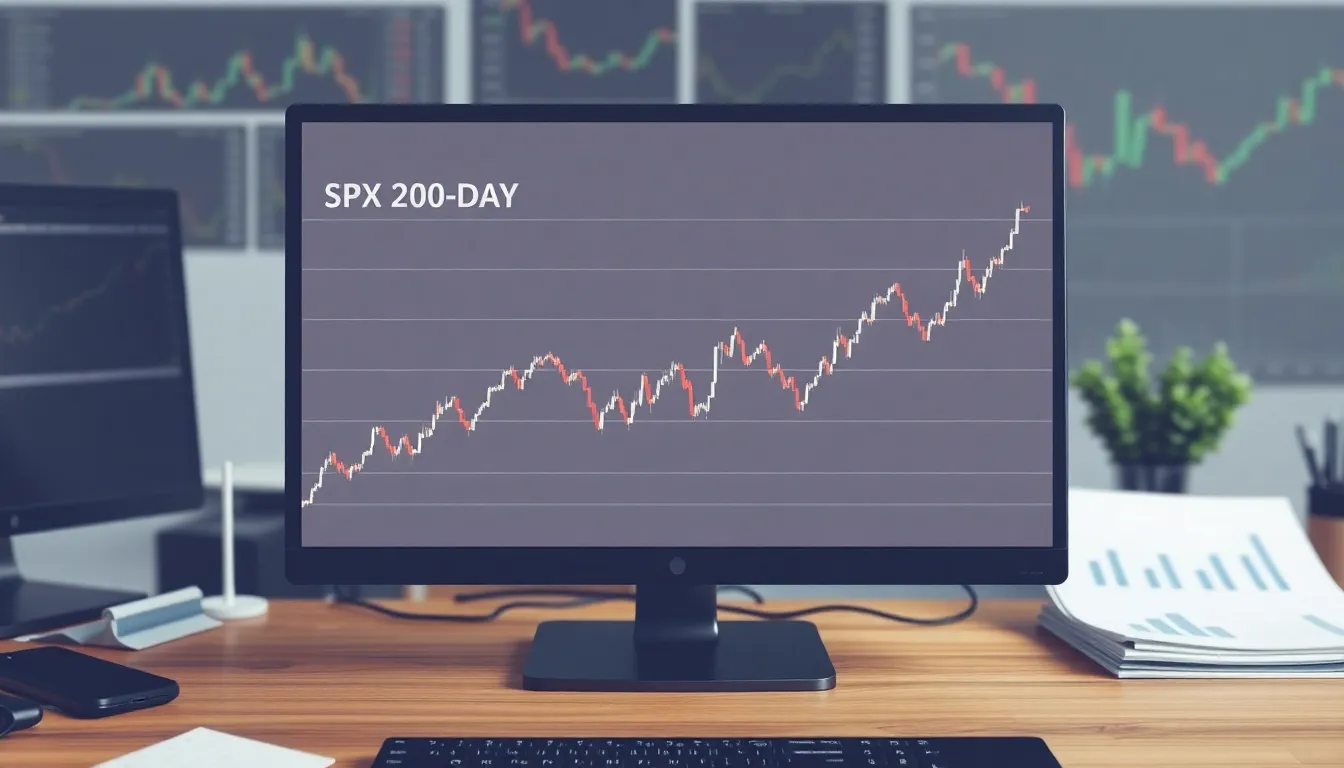Table of Contents
ToggleIn the wild world of stock trading, the SPX 200-day moving average stands out like a lighthouse in a stormy sea. It’s not just a fancy term thrown around by financial wizards; it’s a crucial tool that can help investors navigate the unpredictable waters of the market. Whether you’re a seasoned trader or just dipping your toes into the investment pool, understanding this moving average can be the difference between riding the wave and getting swept away.
Picture it as your trusty compass, guiding you through the ups and downs of the stock market. It smooths out the noise and provides clarity, helping traders make informed decisions. So grab your metaphorical surfboard and get ready to ride the SPX wave, because this moving average is about to become your new best friend in the quest for financial success.
Understanding SPX 200 Day Moving Average
The SPX 200-day moving average serves as a critical indicator for assessing long-term market trends. Investors use it to evaluate price movements over time, aiding in the identification of potential support and resistance levels.
What Is the 200 Day Moving Average?
The 200-day moving average, often abbreviated as MA, calculates the average closing price of a security over the past 200 days. This metric smooths out short-term fluctuations, allowing market participants to observe the underlying trend. Traders frequently interpret the 200-day MA as a benchmark to determine whether an asset is trending upward or downward. Such insights help them make strategic decisions about buying and selling stocks.
Importance of SPX in Financial Markets
The SPX, or S&P 500 Index, holds significant importance in financial markets due to its representation of 500 large-cap U.S. companies. Investors regard it as a barometer for overall market performance. Many professionals use the SPX 200-day moving average to gauge market sentiment, helping to identify bullish or bearish trends. Tracking this moving average can guide their investment strategies, aligning with market momentum and reducing risk exposure.
How to Calculate the SPX 200 Day Moving Average

Calculating the SPX 200-day moving average is straightforward and essential for understanding market trends.
Step-by-Step Calculation
- Gather historical closing prices for the SPX over the last 200 days.
- Add the closing prices together to find the total.
- Divide the total by 200 to obtain the average closing price.
- Repeat this process daily, dropping the oldest price and including the latest closing price.
This method smooths out daily fluctuations, revealing the underlying trend in market movements.
Tools and Resources for Calculation
Numerous tools assist with calculating the SPX 200-day moving average.
- Financial websites offer built-in calculators to automatically compute moving averages.
- Spreadsheet software, like Excel, allows users to create formulas for custom calculations.
- Analytical platforms, such as TradingView and Bloomberg, provide advanced charting features that display the 200-day MA.
Each of these resources enhances the accuracy and efficiency of calculating the moving average for informed trading decisions.
Analyzing the SPX 200 Day Moving Average Trends
The SPX 200-day moving average provides valuable insights into market trends. This tool reflects historical performance, helping traders gauge previous price movements.
Historical Performance Insights
Historical price data indicates that the SPX 200-day moving average often correlates with market cycles. Analysis reveals that when the SPX consistently trades above its 200-day MA, a bullish trend typically prevails. Conversely, periods below the moving average suggest bearish market conditions. Notably, investors can track these patterns to identify potential buy or sell signals. By examining fluctuations over multiple years, traders gain a comprehensive understanding of long-term trends. Historical performance strengthens investment strategies through better-informed decisions focused on prevailing market sentiment.
Recognizing Bullish and Bearish Signals
Bullish signals arise when the SPX crosses above the 200-day moving average, suggesting upward momentum. This upward crossover indicates potential buying opportunities, drawing interest from investors. Bearish signals occur when the SPX dips below the 200-day MA, reflecting weakness in market trends. Monitoring these crossovers helps traders act swiftly in response to changing conditions. Incorporating this analysis into trading strategies enhances decision-making effectiveness, allowing for better alignment with market momentum. Overall, recognizing these signals supports risk management by providing clear indicators of market shifts.
Strategies for Trading with SPX 200 Day Moving Average
Utilizing the SPX 200-day moving average enhances trading strategies by offering precise entry and exit points. Traders often look for buying opportunities when the SPX rises above this moving average, signaling a potential bullish trend. Conversely, exit signals emerge when the SPX dips below the 200-day MA. These crossovers allow investors to align their trades with prevailing market momentum.
Entry and Exit Strategies
Identifying entry points involves monitoring the SPX’s movement relative to the 200-day MA. Enter a trade when the SPX clears this moving average with strong volume, indicating increased buying interest. Exit the trade when the SPX falls beneath the 200-day MA, suggesting a reversal in market sentiment. Additionally, using candlestick patterns alongside these signals strengthens decision-making. Combining multiple indicators provides a comprehensive view of market conditions and reinforces trade validation.
Risk Management Techniques
Implementing risk management techniques is crucial to minimize potential losses while trading with the SPX 200-day MA. Establishing a stop-loss order just below the 200-day MA protects against unfavorable price moves. Traders typically allocate a small percentage, around 1-2%, of their trading capital per position. Diversifying investments across various asset classes further reduces risk exposure. Monitoring market volatility helps to adjust position sizes accordingly, providing an additional layer of protection against significant market shifts.
Embracing the SPX 200-day moving average can significantly enhance trading strategies. This powerful tool not only provides insights into long-term market trends but also helps identify key support and resistance levels. By understanding its implications traders can make more informed decisions and align their strategies with market momentum.
Utilizing the SPX 200-day moving average alongside effective risk management techniques allows investors to navigate the complexities of the market with greater confidence. As they incorporate this indicator into their analyses they’ll find it invaluable in pursuing financial success and achieving their investment goals.





